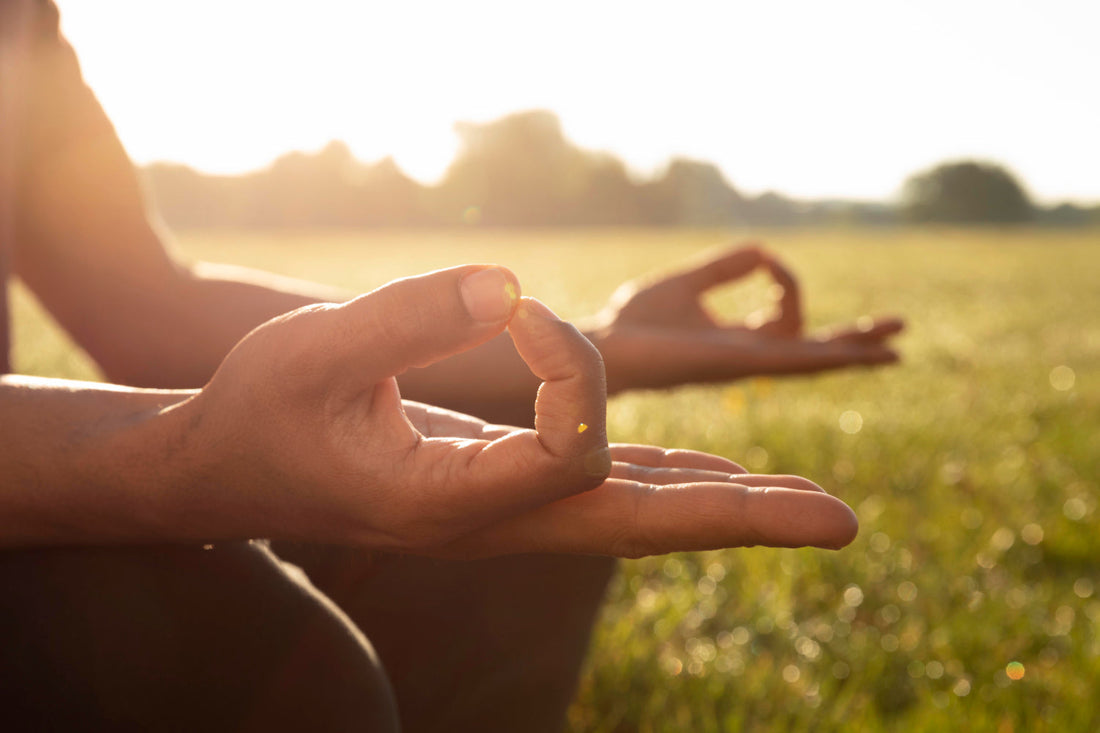Meditation has long been hailed for its health benefits on mental health, but incorporating it into a busy lifestyle can often seem like a challenging task. Many of us face days packed with meetings, errands, and responsibilities that can leave us feeling like there's hardly a moment to spare. However, even amidst a hectic schedule, finding pockets of time for meditation can significantly enhance our well-being, helping to reduce stress and increase mental clarity.
In this blog, we'll explore practical strategies for integrating meditation into your daily life, no matter how crowded your calendar seems. Whether you're struggling to find time, looking for effective methods to practice mindful meditation, or seeking tips to make meditation a seamless part of your day, this guide is designed to help you. By weaving meditation into the fabric of your daily routine, from the moment you wake up to your midday lunch break and right before you sleep, you'll discover that you can engage in meditation in various forms—whether sitting cross-legged in a quiet room or taking deep breaths during a short break at the grocery store. Let’s dive into how you can turn these fleeting moments into opportunities for peace and mindfulness, ensuring that meditation becomes an accessible and vital part of your busy life.
- Start Small
When you're struggling to find time to meditate, remember that even a few minutes each day can make a noticeable difference. Start by carving out just five minutes daily, perhaps early in the morning, during your lunch break, or right before bed. The key is to start with manageable increments and to gradually increase the time you dedicate as you grow more accustomed to the practice. These small moments can serve as a powerful tool for reconnecting with yourself amidst a busy schedule.
- Incorporate Meditation into Your Daily Routine
Integrating meditation into existing daily habits can enhance its impact and ensure consistency. For example, take a moment to practice deep breathing right after you brush your teeth each morning and night. This simple act of coupling meditation with a routine activity can significantly reinforce your new habit, making it easier to remember and stick to every day.
- Practice Mindful Meditation Anywhere, Anytime
You don't need a perfectly calm environment to engage in meditation. Embrace the flexibility of meditating anywhere at any time—whether you're in line at the grocery store or taking a short break at work. Simply close your eyes, take a series of deep breaths, and concentrate on your breathing. Practicing mindfulness for just a few minutes can significantly decrease stress and bring a sense of calm to your hectic day.
- Find a Quiet Moment During Busy Times
Even on the busiest days, there are usually brief moments that can be turned into opportunities for meditation. If your day starts at full speed, identify small pauses, such as the time taken to walk to a meeting or while your computer is starting up. Utilize these moments to take a few deep breaths and center yourself, which can make a significant difference in your mental clarity and emotional stability.
- Use Technology to Help You
Leverage modern technology to make meditation a more accessible part of your daily life. Numerous apps are available that can assist those with busy schedules in maintaining a regular meditation practice. These tools offer reminders and guided sessions ranging from one minute to longer periods, easily fitting into any segment of your day and helping you make the most of even brief windows of time.
- Make It a Part of Your Lunch Break
Consider dedicating a portion of your lunch break to meditation, which can be a prime time to rejuvenate, particularly if your mornings and evenings are crowded. Find a quiet place, like a nearby park or even your car, to sit quietly and meditate for a few minutes. This midday pause can significantly enhance your concentration and productivity for the rest of the day, helping you manage stress and refocus on your tasks.
- Be Flexible with Your Meditation Posture
Traditional meditation often conjures images of sitting cross-legged on the floor; however, it's essential to find a posture that is comfortable for you. Meditation can be practiced while sitting in a chair, standing, or even walking. The primary goal is to adopt a posture where you can relax and focus deeply on your breath, allowing you to meditate effectively regardless of your physical position.
- Practice Makes Perfect
Regularly integrating meditation into your daily life will gradually make it a seamless part of your routine. Initially, it may feel like yet another task on your busy schedule, but over time, as you continue practicing, you'll likely notice significant benefits like reduced stress and enhanced overall productivity. These improvements can affirm the value of meditation, making it an indispensable part of your daily activities.
Conclusion
Meditation doesn't require drastic changes to your lifestyle. With these simple tips, you can start practicing meditation despite your busy schedule and soon reap its many benefits. Remember, the goal is to integrate meditation into your life without it feeling like a burden. Over time, these moments of peace will become a cherished part of your routine.






